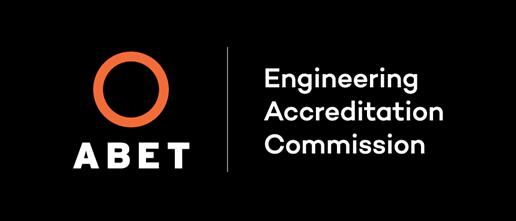
ITU Control and Automation Engineering Undergraduate Program: Accredited by the Engineering Accreditation Commission (EAC) of ABET, www.abet.org, (Criteria: General Criteria Only (EAC)).
ABET - Why Accreditation Matters
ABET - Accreditation Step by Step
ABET - Accredited Program Search
ABET Coordinator: Prof. Dr. Mustafa DOĞAN
ABET Commision: Prof. Dr. Hakan TEMELTAŞ, Prof. Dr. Mehmet Turan SÖYLEMEZ, Assoc. Prof. Dr. Gülay ÖKE GÜNEL, Assist. Prof. Dr. İlker ÜSTOĞLU, Lecturer Dr. Erhan YUMUK
ACCREDITATION ADDS VALUE
ABET accreditation is proof that a collegiate program has met standards essential to produce graduates ready to enter the critical fields of applied science, computing, engineering, and engineering technology. Graduates from an ABET-accredited program have a solid educational foundation and are capable of leading the way in innovation, emerging technologies, and in anticipating the welfare and safety needs of the public.
WHY ACCREDITATION MATTERS TO:
1. Students
Be confident in your education—ABET accreditation is the trusted standard for employers worldwide.
2. Programs & Institutions
ABET accreditation demonstrates your commitment to delivering quality education.
3. Industry, Government & The World
Employers can trust that graduates of ABET-accredited programs are prepared to enter the workforce.
PROGRAM EDUCATIONAL OUTCOMES
The Faculty Board has identified four educational objectives so that the Control and Automation Engineering Program can achieve the stated mission. These Program Educational Objectives (PEO) of the Control and Automation Engineering Program are designed to graduate students who
PEO1: are able to effectively utilize science and engineering principles together with modern tools in solving control engineering problems, design high-quality engineering systems, as well as propose implementable solutions for related interdisciplinary problems.
PEO2: appreciate the importance of lifelong learning, continuously expanding their knowledge and skills through professional activities and training, the pursuit of higher educational degrees, and/or individual professional improvement.
PEO3: have self-confidence and essential communication skills to build successful careers, and participate effectively in teamwork in both national and international frames.
PEO4: apply high standards in the performance of their professional work with ethical, societal and environmental awareness.
STUDENT OUTCOMES
SO1: An ability to identify, formulate, and solve complex control engineering problems by applying principles of engineering, science, and mathematics.
PC1.1. is able to use basic science, and mathematics in solving engineering systems and processes. (0.25)
PC1.2. is able to identify and formulate control and automation engineering problems. (0.25)
PC1.3. is able to use engineering principles to solve control and automation engineering problems. (0.5)
SO2: An ability to apply engineering design to produce solutions that meet specified needs with consideration of public health, safety, and welfare, as well as global, cultural, social, environmental, and economic factors.
PC2.1. is able to conduct an efficient engineering design systematically, taking all specifications and constraints into account. (0.40)
PC2.2. is aware of public health, safety and environmental factors in engineering design. (0.20)
PC2.3. is aware of welfare and economic factors in engineering design. (0.20)
PC2.4. is aware of global, cultural and social factors in engineering design. (0.20)
SO3: An ability to communicate effectively with a range of audiences.
PC3.1. prepares properly written documents. (0.5)
PC3.2. establishes effective oral communication. (0.2)
PC3.3. is able to make effective oral presentations. (0.3)
SO4: An ability to recognize ethical and professional responsibilities in engineering situations and make informed judgments, which must consider the impact of engineering solutions in global, economic, environmental, and societal contexts.
PC4.1. knows about ethical and professional responsibility. (0.6)
PC4.2. understands the welfare, societal and environmental impacts of engineering solutions. (0.4)
SO5: An ability to function effectively on a team whose members together provide leadership, create a collaborative and inclusive environment, establish goals, plan tasks, and meet objectives.
PC5.1. assigns the roles and tasks in a project plan and
establishes goals. (0.4)
PC5.2. carries out tasks in a team work and fulfils the responsibilities. (0.3)
PC5.3. regards communication with team mates and exploits feedback for verification and validation. (0.3)
SO6: An ability to develop and conduct appropriate experimentation, analyze and interpret data, and use engineering judgment to draw conclusions.
PC6.1. knows basic laws and can designate an analytical model. (0.3)
PC6.2. knows basic knowledge of measurement, determines measurable variables, and uses the test equipment. (0.4)
PC6.3. is able to analyze, interpret and report the gathered data using modern engineering tools. (0.3)
SO7: An ability to acquire and apply new knowledge as needed, using appropriate learning strategies.
PC7.1. is aware of the importance of life-long learning and uses appropriate learning techniques. (0.5)
PC7.2. is able to follow and apply the scientific and technological innovations in his/her area. (0.5)
Enrollment and Graduation Trends for Past Five Academic Years
| |
Year
(2017-2018) |
Year
(2018-2019) |
Year
(2019-2020) |
Year
(2020-2021) |
Year
(2021-2022) |
Year
(2022-2023) |
Full-Time
Students |
389 |
395 |
444 |
510 |
587 |
675 |
Full-Time
Erasmus
Students
(Incoming) |
1 |
- |
- |
- |
2 |
- |
| Exchange |
3 |
3 |
3 |
- |
2 |
- |
| Other |
- |
- |
- |
- |
- |
- |
| Graduates |
70 |
66 |
63 |
80 |
83 |
- |
ABET ACCREDITATION EVALUATION IS AN 18-MONTH, FIVE-STEP PROCESS.
This process is the culmination of a practice of ongoing self-assessment and continuous improvement, which assures confidence that ABET-accredited programs are meeting the needs of their students, preparing graduates to enter their careers, and responsive to the needs of the professions and the world.
For a visual timeline of the accreditation process, see Accreditation Step-by-Step
References:
This page has been copied from https://www.abet.org/accreditation/what-is-accreditation/why-abet-accreditation-matters/
and https://www.abet.org/accreditation/get-accredited/accreditation-step-by-step/